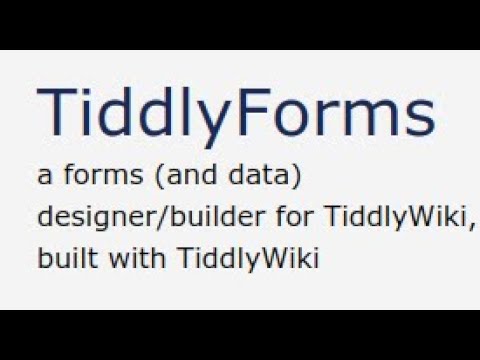@pmario thanks for your contribution. I have already considered using the mechanisums you mention but have already seen they are somewhat limited.
I am aware of that but most of the life of a tiddler we may not need to edit the title and or text field but other fields.
- We could reuse or extend this mechanism to allow what I am after, displaying the editable fields in the view template. We could build a set of alternate edit forms to replace the default editor but it seems to me, these end up being a monolithic edit template for each tiddler type but I am looking to get more flexibility, for example what if there were data entry form, another an update form (Each field has a button to place in edit mode independently).
- If we follow the current mechanisms you end up with an edit form tiddler for each edit mode x the number of tiddler types. This needs more bytes and is harder to automate, or design incrementally.
This however this is possible to design, for example if the edit template searches for all fields defined in the template, or current tiddlers of the same type, it can present the editor which will create the field when a value is provided. Even existing tiddlers will receive the new field editor when a new field is added to the type.
Thanks, yes, but I am not talking about the type field, which is in effect the mime type, but the logical type of a tiddler such as contact, invoice, transaction etc… It is the primary role of that tiddler, commonly achived with tags, but I want to keep it in a standard field eg object-type.
- The default can be used for missing fields, its created when changed to non-default, or a batch can populate tiddlers after add a new field.
- There may be value in using a list field for “object-types” (plural) so a tiddler can be more than one type simultaneously eg contact and todo (because more information needs to be added to the contact).
It is possible to document it, but I wanted to solicit input during the design not after the event. I could document an opinionated solution when others could influence the design.
- However this is a good approach, thanks. Do it during this project to identify the design, mechanisms then Document it, before finally coding. I will do that. Perhaps I write the first draft then get input and write a second draft for comment?
Many are there, yes, but some not yet, I will give examples because it would be hard for you to visualise. I may do some mockups.
Yes it does, thanks again for your input.
